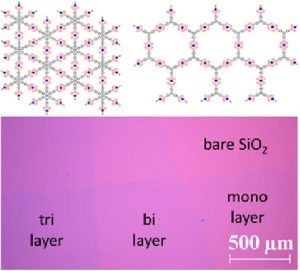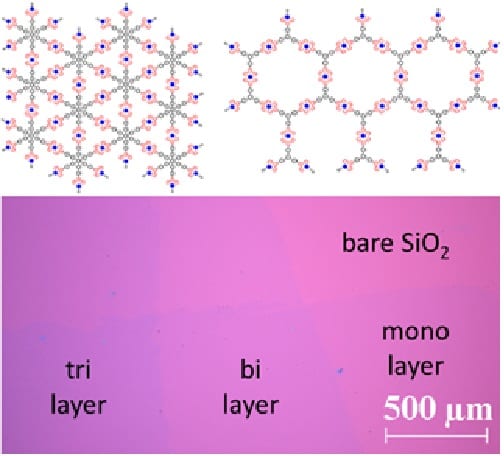 Since the re-discovery of graphene there has been a major activity aimed at creation of monomolecular sheets. At the forefront are procedures that allow for mild conditions so as to ensure structural integrity, order, and precise placement of active centers. Such sheets can be viewed as novel two-dimensional materials and are expected to be beneficial in fields including membranes highly selective in the nano-range, sensitive pressure sensors, surface coatings to improve on scratch and wear resistance and catalyst platforms.
Since the re-discovery of graphene there has been a major activity aimed at creation of monomolecular sheets. At the forefront are procedures that allow for mild conditions so as to ensure structural integrity, order, and precise placement of active centers. Such sheets can be viewed as novel two-dimensional materials and are expected to be beneficial in fields including membranes highly selective in the nano-range, sensitive pressure sensors, surface coatings to improve on scratch and wear resistance and catalyst platforms.
A. Dieter Schlüter et al. from ETH Zürich report a simple procedure in which terpyridine-based monomers are spread at the air/water interface and subsequently connected with transition metal ions injected into the subphase. [Met(tpy)2]2+ complexes form within minutes at room temperature and serve as connector sites between the monomers providing sheets with a mechanical stability high enough to be spanned over large, 20 x 20 mm2-sized holes. Quantitative measurements give an in plane Young’s modulus of approx. 16 GPa which is in a similar range as graphene when normalized by number of netpoints and thickness. The new organometallic sheets are also used to create multilayer assemblies on square centimeter length scales on solid substrates.
The ease of formation of multilayers and the sheets’ mechanical stability will further open access to hybrid systems using organometallic sheets with different pore geometries and different metal ions in combination with graphene and other layered structures such as silicates. It will also allow for fascinating combinations with the LbL method using conventional polyelectrolytes to result in much better defined complex assemblies with improved long-term stability.

















